5 Boro Bike Tour Hit by Controversy By Allowing E-Bikes to Participate
Even though it is not a race, allowing e-bikes into the event is stirring controversy. The vast majority of the 32,000 participants were powered by their own legs and lungs with no assist from a lithium ion battery. And Bike New York says it will be sunk if the MTA tries to charge it for “lost revenue” for bridge closings.
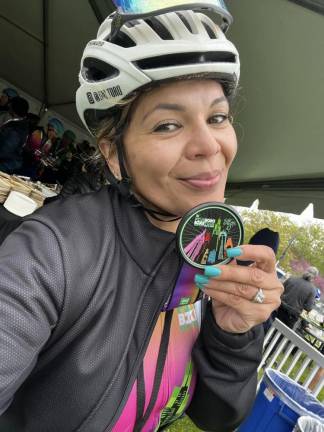
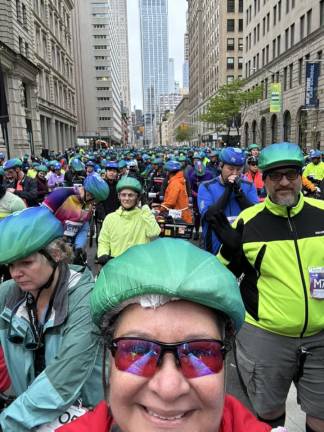
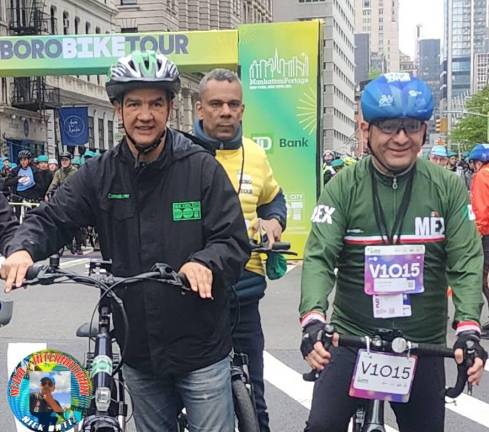
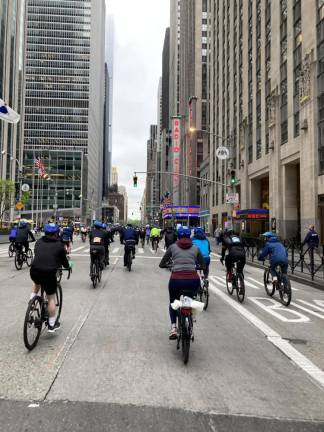
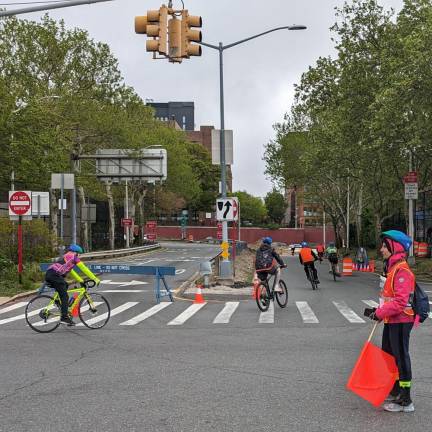
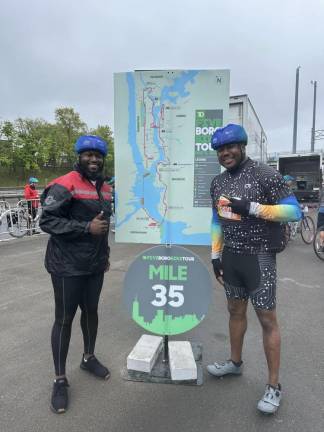
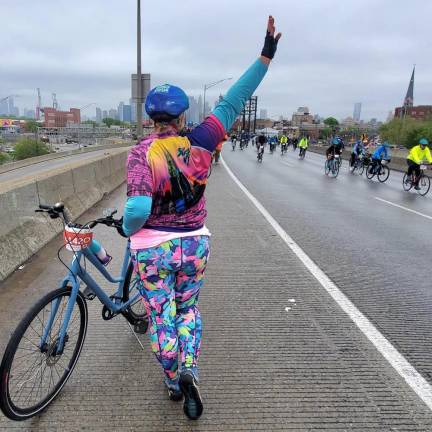
More than 32,000 cyclists gleefully traversed New York City, from Tribeca to Staten Island, during the 42nd Annual TD Bank Five Boro Bike Tour May 5. Weather for the event was neither great nor awful but it was tolerable, with overcast skies keeping temperatures in the low 50s and spots of light misty rain arriving in late morning.
Organized by Bike NYC— a non-profit organization promoting bicycles and bicycle education, including numerous free classes— the first wave of riders set off at 7:30 a.m.,
Although Class 1 ebikes (pedal assisted bicycles with no throttle and a maximum speed of 20 mph) were allowed to participate, the vast majority of riders completed the route under their own power, seated atop a very wide array of bicycles. Contrary to its sometimes elitist reputation, by far most bicyclists are egalitarian in spirit—it’s the rider, not their equipment, that matters. Ebikes of any kind are more controversial.
While the Five Boro Bike Tour is emphatically not a race, it is a challenge, and to have that challenge diminished by ebike riders people zipping up hills or slicing through headwinds that legs and lung powered riders struggle with leaves many riders dismayed. The issue is one both of philosophy, and safety. Most bicyclists value riding as an activity that gets them away from motorized vehicles, period, and the intrusion of ebikes, and their substantially faster speeds, rarely elicit feelings of fraternity.
Any pedestrian who’s been buzzed or frightened by an ebike (or worse, an illegal scooter) knows the feeling.
However one chose to ride the 40-mile long course, it began at Franklin and Church streets in Tribeca, with much of the surrounding area closed off as a staging area. From here, the peloton heads north up Sixth Avenue and enters Central Park, swinging east and then north again, up and down the mildly rolling hills before exiting the park at Adam Clayton Powell Boulevard. Cruising through Harlem, the course dips into and out of the Bronx before heading south on FDR Drive until exiting the highway to tackle the steep climb and fast descent of the 59th Street Bridge to Long Island City. A quick loop of Astoria follows, after which riders hug the Queens and Brooklyn waterfronts until, after passing under Brooklyn Heights, they reach Columbia Street and the entrance to the BQE.
Here’s where things got interesting, including a jovial female course marshal in glam rock-like makeup with sparkles and another woman marshal in traditional cyclist gear happily shouting, “Welcome to the BQE!”—a welcome unheard in any other setting—as she gestured for the riders to turn left onto the often reviled thoroughfare. From an aid tent in between these two points, other marshals made calls to “pull over!”—not because someone was ailing but rather because event organizers were trying to stop “bandits” (unregistered riders identified by their lack of visible ride numbers) from making the final run to Staten Island.
While most “bandits” are harmless and jump on and off the course for a quick thrill or to accompany a friend, this is a charity event, and additional riders in the carefully managed finishing area at Fort Wadsworth are an unwelcome burden.
Also unwelcome was the news, reported in the New York Post, that the MTA was trying to extort Bike New York for hundreds of thousands of dollars in supposed “lost revenue.”
The MTA recently made similar demands of the New York Marathon organizers, the New York Road Runners Club, on whose behalf Governor Hochul quickly interceded. While Bike New York hopes for a similar intervention, the organization’s CEO Kenneth Podziba warned, “It will sink us because we don’t have the budget of the marathon.” The MTA, Podziba continued, “haven’t been able to demonstrate to us that they’re losing any revenue.”
Who will triumph this battle—the often opaque MTA or the transparent, openhearted Bike New York—remains to be seen but on this Sunday at least, everyone who rolled off the Verrazano Bridge and received their medal went home a winner.